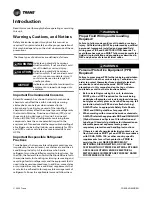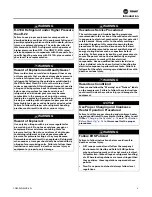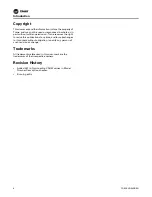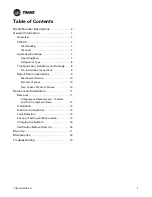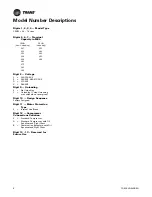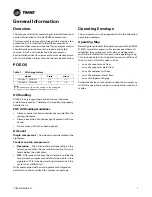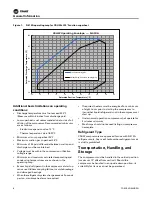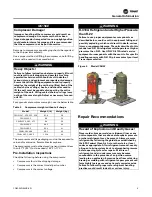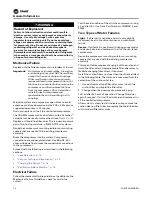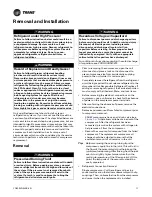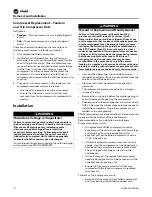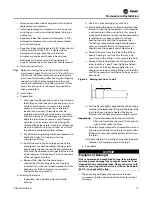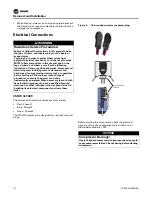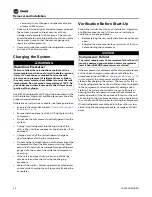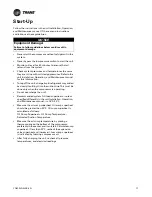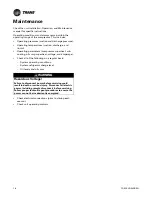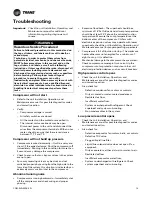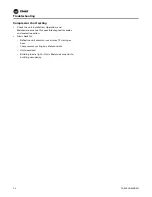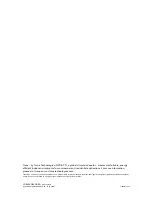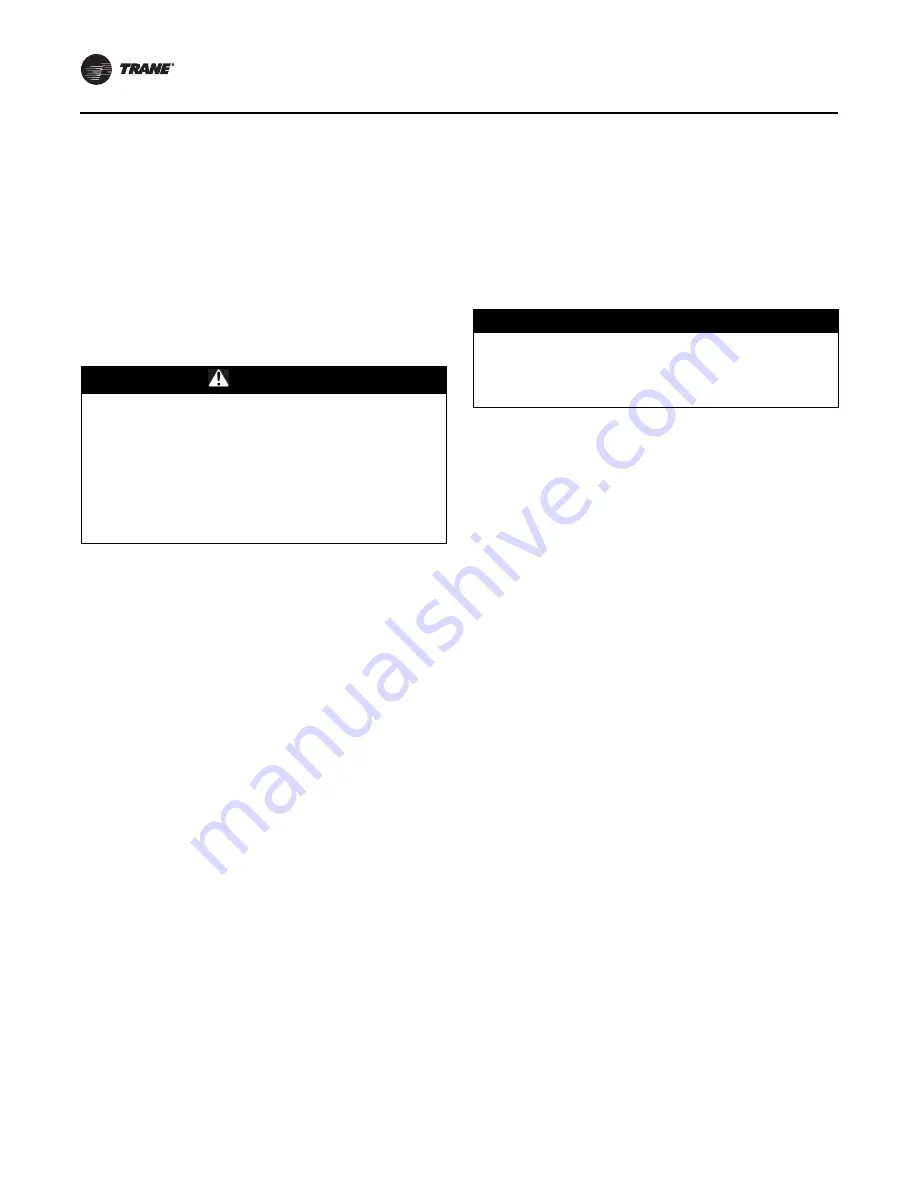
Removal and Installation
16
COM-SVN003B-EN
vacuum with dry nitrogen and repeat evacuation
process to 500 micron.
•
Once system is leak-tight, connect compressor repeat
the vacuum procedure, break vacuum with dry
nitrogen and evacuate to 500 microns. The vacuum
should be able to be maintained for four hours. Isolate
the vacuum pump so that the vacuum gauge only
reads the system pressure.
•
Vacuum must be measured in the refrigeration system
and not at the vacuum pump.
Charging the System
Use R-410A refrigerant only! Follow the instructions in the
unit Installation, Operation, and Maintenance manual for
proper charging methods.
If there are no instructions available, use these guidelines:
•
Evacuate the unit as described in
•
Ensure that the oil level is at least 1/2-sight glass in the
compressor
•
Do not use the compressor to pull refrigerant into the
system.
•
Charge liquid refrigerant into the high-side of the
unit—either into the condenser or liquid receiver, if so
equipped.
•
Charge as much of the unit refrigerant charge as
possible before starting the compressor.
•
Do not charge liquid refrigerant into the low side of the
compressor without the compressor running. Small
amounts of liquid may be metered through refrigerant
gauges into the suction line while the compressor is
operating.
•
If the unit is equipped with suction and discharge
service valves, close them during the charging
procedure.
•
Water chiller units
—Always operate the chilled water
pumps while charging the unit to prevent freezing the
evaporator.
Verification Before Start-Up
Follow the instructions in the unit Installation, Operation,
and Maintenance manual. If there are no instructions
available, use these guidelines:
•
Before starting the unit, verify that all service valves are
open.
•
Energize the crankcase heater a minimum of 8 hours
before starting the compressor.
If the compressor is a replacement for a failed compressor
and has been charged in accordance with either the
procedures in the unit IOM or
in this manual, the compressor could be immediately
started after charging the system. The reason for this is
that the refrigerant has not had sufficient time to migrate
to the compressor and cause potential damage upon
startup. The system should set for no more 8 hours or
overnight with a refrigerant charge without crankcase
heater operation. If the time exceeds 8 hours or the unit
sits overnight, the crankcase heater must be operational
for a minimum of 8 hours prior to starting the compressor.
If liquid refrigerant was charged into the suction or low
side during the charging procedure, damage could still
occur.
WARNING
Hazardous Pressures!
Failure to follow these instructions could result in a
violent explosion, which could result in death or serious
injury. If a heat source is required to raise the tank
pressure during removal of refrigerant from cylinders,
use only warm water or heat blankets to raise the tank
temperature. Do not exceed a temperature of 150°F. Do
not, under any circumstances apply direct flame to any
portion of the cylinder.
NOTICE:
Compressors Failure!
To protect compressors from premature failure the unit
must be powered and crankcase heaters energized at
least 8 hours BEFORE compressors are started.

